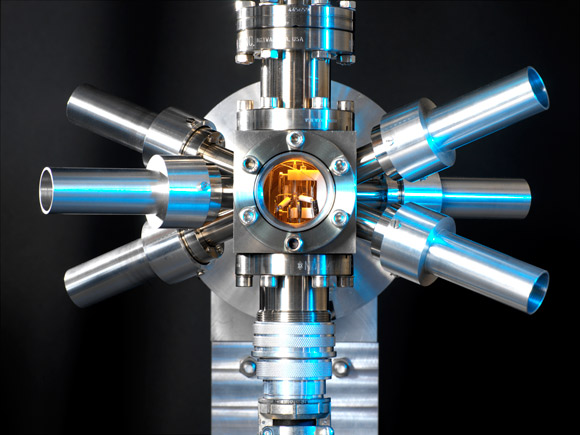The clock as a tool to measure space: after longitude, the challenge is the GPS localization
Hard to tell, but time measurement is a technical challenge tightly connected to the space measurement. The years and the resources invested in longitude measurement during XVII and XVIII Century demonstrate it. Marine chronometers finally allowed a safe sailing of oceans and the regular management of intercontinental sea routes.
In the same way, the technological shift given by satellite localization (GPS) is always allowed to the development of time measurement tools. The precise time measurement is in fact at the basis of the whole modern technology: computer networks, the Internet, smartphones, electric energy, … these all require synchronization down to the billionth of a second.
How is this precision possible? Thanks to the atom. Atomic clocks give us the time today through the microwave signal that electrons in atoms (usually Caesium atoms) emit when they change energy levels. This is why the official second definition is “the duration of 9192631770 periods of the radiation corresponding to the transition between the two hyperfine levels of the ground state of the caesium 133 atom”
Today many scientists are experimenting new technologies for time measurement, creating a new generation of atomic watches called “optical”. The improvement is not only in being able to generate more frequent radiation, but also in the ability to count them faster. A laser clock developed by Madej measures the four hundred and thirty trillion light waves per second required to energize a strontium atom. It converts this to four hundred and thirty trillion “ticks,” parsing time more finely than any of today’s microwave clocks.
What is the goal of this research field? It is sufficient to think about GPS systems functioning. These satellites, outfitted with small atomic clocks, stamp every signal transmission down to the nanosecond, or billionth of a second. Because the speed of the satellite’s signal is known—approximately a foot per nanosecond—by measuring the precise amount of time it spends in transit to the receiver, a ground location can be derived using the satellites as reference points. If we could only measure seconds by the millionths—the length of time it takes a signal to travel a thousand feet—G.P.S. estimates could be off by miles.
This should be enough in order to understand the potential of new metrology standards to current technologies. Is it really necessary? Hard to tell in advance: when the atomic clock was invented, could we think it will have allowed to drive our cars?
Credits: The New Yorker































